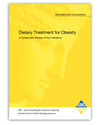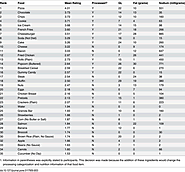-
About
- About Listly
- Community & Support
- Howto
- Chrome Extension
- Bookmarklet
- WordPress Plugin
- Listly Premium
- Privacy
- Terms
- DMCA Copyright
- © 2010-2025 Boomy Labs

 Erika Yigzaw
Erika Yigzaw
Listly by Erika Yigzaw
PubMed comprises more than 23 million citations for biomedical literature from MEDLINE, life science journals, and online books. Citations may include links to full-text content from PubMed Central and publisher web sites.
By Mark Derewicz June 24, 2014 In your bones, there is fat. Why? Researchers don't know, but they have theories. How does it get there? They have theories about that, too. Is it the same sort of fat found in muscle? Not sure. Is this bone fat a bad thing?


Objectives We propose that highly processed foods share pharmacokinetic properties (e.g. concentrated dose, rapid rate of absorption) with drugs of abuse, due to the addition of fat and/or refined carbohydrates and the rapid rate the refined carbohydrates are absorbed into the system, indicated by glycemic load (GL). The current study provides preliminary evidence for the foods and food attributes implicated in addictive-like eating. Design Cross-sectional. Setting University (Study One) and community (Study Two). Participants 120 undergraduates participated in Study One and 384 participants recruited through Amazon MTurk participated in Study Two. Measurements In Study One, participants (n = 120) completed the Yale Food Addiction Scale (YFAS) followed by a forced-choice task to indicate which foods, out of 35 foods varying in nutritional composition, were most associated with addictive-like eating behaviors. Using the same 35 foods, Study Two utilized hierarchical linear modeling to investigate which food attributes (e.g., fat grams) were related to addictive-like eating behavior (at level one) and explored the influence of individual differences for this association (at level two). Results In Study One, processed foods, higher in fat and GL, were most frequently associated with addictive-like eating behaviors. In Study Two, processing was a large, positive predictor for whether a food was associated with problematic, addictive-like eating behaviors. BMI and YFAS symptom count were small-to-moderate, positive predictors for this association. In a separate model, fat and GL were large, positive predictors of problematic food ratings. YFAS symptom count was a small, positive predictor of the relationship between GL and food ratings. Conclusion The current study provides preliminary evidence that not all foods are equally implicated in addictive-like eating behavior, and highly processed foods, which may share characteristics with drugs of abuse (e.g. high dose, rapid rate of absorption) appear to be particularly associated with “food addiction.”
